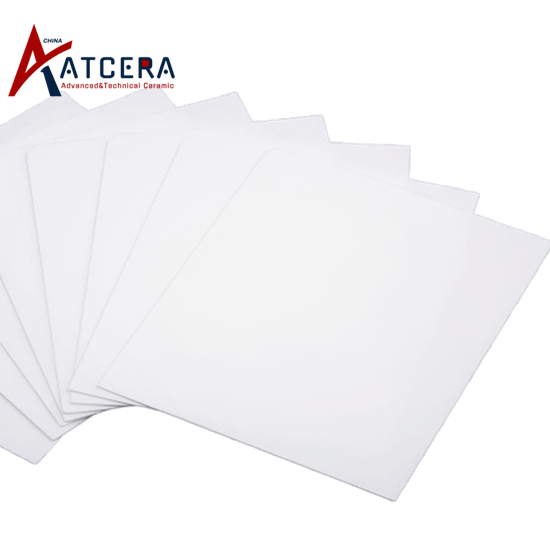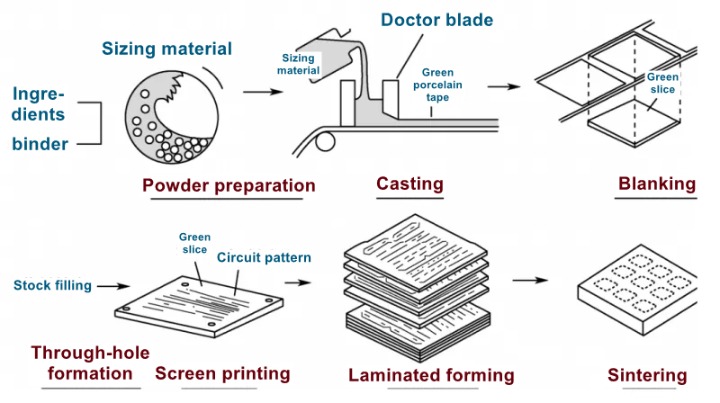Because of its excellent mechanical properties, thermal stability and chemical inertness, alumina substrate has shown wide application potential in electronic packaging, thermal management and high-performance structural parts. The preparation process involves complex process steps, in which casting process, as the core link, plays a decisive role in the performance of the final product. This paper aims to discuss the key control points in casting process, such as raw material formula, casting film strip thickness and sintering process parameters, analyze how these parameters affect the thickness uniformity, appearance quality and surface roughness of alumina ceramic substrate engineering application indicators, so as to optimize the preparation process and improve the overall performance of the product.

Raw material formulation and slurry characteristics
The raw material formula is the basis of alumina ceramic substrate preparation, which directly affects the viscosity, solid content and other key physical properties of the slurry. Suitable slurry formulation helps to achieve good casting effect and uniform film distribution. The viscosity of the slurry should be moderate, which can ensure good spreading and avoid cracks or deformation during the drying process.
Casting film thickness control
The thickness of the cast film strip is a key factor in determining the final thickness tolerance of the substrate. In addition to the slurry state, the height of the casting blade also directly affects the thickness of the dry film. The thickness distribution of the film can be optimized by precisely controlling the height of the blade and the velocity of the film (uniform linear motion), and the phenomenon of thick center and thin sides can be reduced. For the substrate requiring high precision, the casting machine with adjustable blade surface curve becomes a necessary choice.
Desticking sintering process parameters
Debonding sintering is a key step in the preparation of alumina ceramic substrate, which directly affects the density, strength and microstructure of the substrate. Reasonable sintering temperature and holding time are helpful to eliminate the internal pores and improve the mechanical properties and thermal stability of the substrate. At the same time, the atmosphere control in the process of debonding is also an important factor affecting the quality and performance of the substrate.

Casting process flow chart
In summary, the preparation process of alumina ceramic substrate is a complex system engineering involving multi-factors and multi-steps. The rational selection and optimization of key control points such as raw material formula, casting film thickness and sintering process parameters are very important to improve the thickness uniformity, appearance quality and surface roughness of the substrate. Through in-depth study of the mechanism of influence of these parameters, combined with advanced preparation technology and equipment, the overall performance of alumina ceramic substrates can be further improved to meet the stringent requirements in high-performance electronic packaging, thermal management and structural components. In the future, with the continuous progress of material science and preparation technology, the preparation process of alumina ceramic substrate will be more refined and intelligent, providing a more solid foundation for the development of related fields.


























